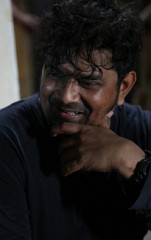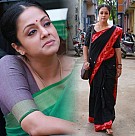PHOTOS & STILLS - GALLERY
VISITOR COLUMN

Mysskin: Unique, Quirky, Inscrutable!
By A K NarayanBehindwoods.com isn't responsible for the views expressed by the visitor in this column. The visitor claims that this column is his/her own. If the column infringes any copyrights that you hold, please email us at columns@behindwoods.com.
Mysskin has a way of blurring borders that divide the good from the bad. We don’t know what he personally feels, but his films seem to suggest that not all bad people are bad by choice; many are so because they don’t have another choice. He suggests that there is good hidden behind the dark veil of bad, as also there is a shade of grey behind every white layer. There are no absolutely good or bad people, just human beings who are pawns at the hand of destiny. This is what Mysskin’s philosophy might look like, just guessing!
What leads to such a guess? Onaayum Aattukkuttiyum, and a few other movies that he has made. He takes a paid professional killer and almost makes him look like a savior in OA. The kind of character that would have evoked no sympathies in the hands of another director becomes the object of sympathy in the hands of Mysskin. He makes the audience look beyond the dark veneer of the paid killer. When the movie starts, the audience wants Wolf to be killed. But, in the end, when he almost shoots himself, the audience hopes that he had lived. Mysskin knows the emotional buttons to be pressed to make a bad man look good. He blurs the line between good and bad.
It’s not just OA that proves this. Look at his other movies too. He gives a touch of pathos to the death of almost each of his antagonists. Of course, there are characters that he completely paints in black – like Naren in Mugamoodi, or the gang of middle-aged perverts from Yudham Sei, or Prasanna in Anjathe, or Thamba in OA. But, a lot of his characters are in gray and their death is shown with as much emotion as the death of a protagonist. Anjaathe is a classy example of this tendency of Mysskin. The way he shows Naren and Ajmal as the bad and the good, respectively, at the beginning, flips sides midway and then gives a poignant end to Ajmal’s character, stretching the scene a second longer to let us see that he realized that he was wrong. That second changes our perception of the character, making us think that it was just a mis-understanding that led to him being what he was.
Cinema mostly doesn’t care much about the background of its antagonists. When a bad guy dies, very few film makers dwell on the family he leaves behind. Mysskin is one among the few who does that. Recall the corrupt police officer who is shot dead close to the climax of Yudhdham Sei. The camera stays on him for a second longer than it would in a normal Tamil movie, just to show us his mobile phone ringing; his daughter is calling. Mysskin takes that moment to show us the human being inside a criminal.
These are small things, but very unique. When we want to make something look whiter than it actually is, we can paint the surroundings black. The contrast gives us the desired effect. Cinema works this way to make its protagonist seem like a hero. Mysskin, one thinks, doesn’t like using too much of black or white, he deals in gray. The closing scene of OA is a good example – Wolf, the bad guy to start with, is lying dead with our sympathies, while the police men (the heroes to start with) are standing there, heads hanging (in shame, or relief, or a feeling of nothingness – we don’t know) Even the young man, who risked a lot to save a life at the start of the film, doesn’t hesitate to shoot down a person by the end. Mysskin deals in such extremes with ease.
Most of his films can be boxed into these basic philosophies – about good not being altogether good, about bad not being altogether bad, about everyone having a bit of both in them. It just takes the right or wrong situation to bring out the good or bad in us.
But, it is not just these unique philosophies that are common to Mysskin films. There are some very interesting quirks as well. No, we are not discussing the ‘yellow saree’ anymore. You wonder where he developed those fascinations; like the one he has for dark. Dark seems to be his constant companion. One thought that there can’t be more ‘dark’ shots than he had in Yudhdham Sei, but OA did it.
Also, he almost always has a character that is differently abled; no matter how small the role. Kuruvi from Anjathe, the hunchback in Mugamoodi, the blind family in OA. So many occurrences cannot be seen as mere coincidence; it has to be deliberate, for reasons only the director will know.
He definitely has a fascination about men who can single handedly make an entire police force look helpless. Go all the way back to Anjaathe; he had the entire city’s police force going after the gang in the climax. Yudham Sei had a similar situation. Mugamoodi took it to another level where all of Tamil Nadu’s police force was clueless in a hostage situation. Now in OA, we have all of Chennai’s police officers being led on a merry hunt by the Wolf. Mysskin certainly gets excited at the thought of one man toying with the authorities.
But, the most surprising, perhaps even confounding, tendency that Mysskin has shown throughout his film making career is that of the ‘staged fight sequence’. For a film maker who avoids the so called commercial trappings in all other departments, his fights look strangely choreographed. It started with Anjaathe: five men wearing sacks as masks, attacking a police officer one by one. It was new then. But, when it repeated in Yudham Sei, we had a feeling of déjà vu. Why is he repeating himself, many thought? Now, in OA, he has two Ninja warriors, wearing war paint, carrying swords, waiting for their opponent to unzip his jacket, tie the girl behind his back and adjust his sleeves before they attack him. It crosses the line of realism and commercialism, goes into surrealism. In a movie where guns talk more than men, why are there two Ninja warriors with swords. Even if there are, why do they have to wait for their opponent to arrange himself – this is not a kung fu tournament, they want to kill him. Surely, a film maker with the sensibilities of Mysskin knows that this might look odd, but he persists with this style – for reasons that only he knows.
All said and done, Mysskin is a film maker who has a style that makes us sit up and take notice. He thrills and makes us think, he might even make us weep. But, there are some things about his style that are very difficult to understand. There’s only one thing we can say for sure, he is unique and he is one of his kind in Tamil cinema. Watch Onaaiyum Aattukuttiyum if you are not convinced about this. Even if you are not convinced, you will enjoy the movie.
aknarayan80@gmail.com
Please send your column to columns@behindwoods.com.
FACEBOOK COMMENTS
OTHER VISITOR COLUMNS
RELATED NEWS
- "Mysskin asked me to act in his film and I wanted nothing else''
- Mysskin with a new exciting combo!
- Mysskin's Pisaasu - TN opening weekend box-office collections
- Mysskin's Pisaasu is a huge crowd puller
- Mysskin's next crosses an important hurdle
- Lingaa will not stop the Pisaasu !
- That conversation between Mysskin and Bala regarding Pisasu!
- Mysskin to unveil his ghost on Christmas?
- Mysskin opens up about Pisaasu!
- Bala's Thaara Thappattai begins!
- “I have become thick skinned now”, Mysskin admits
- Mysskin's Pisasu gets one more
- BW - IIT Film Fest 2014: Onaayum Aattukuttiyum
- Behindwoods IIT Film festival
- Mysskin unleashes 'Pisasu' at Bala's place
RELATED LINKS
- Pisaasu Trailer
- Mysskin's encounter with Pisasu
- Bipasha Basu I II III IV V VI VII VIII IX X XI XII XIII XIV XV XVI XVII XVIII XIX XX
- Pisaasu Teaser Launch
- Pisaasu Teaser Launch
- Behindwoods IIT-M Film Festival 2014
- Behindwoods IIT-M Film Festival 2014 Trailer
- Regina Cassandra
- Regina Cassandra I II III IV V VI VII VIII IX X XI XII XIII XIV XV XVI XVII XVIII XIX XX
- Gulaab Gang I II III
- Praneetha I II III IV V VI VII VIII IX X XI XII XIII XIV XV XVI XVII XVIII XIX XX
- Kallapadam Movie Launch
- Pongadee Neengalum Unga Kadhalum Audio Launch
- Pongadee Neengalum Unga Kadhalum Audio Launch
- Onayum-Aatukutiyum










